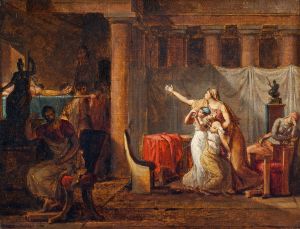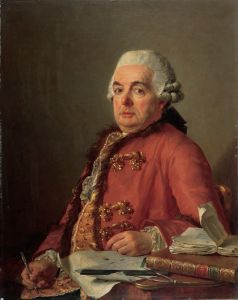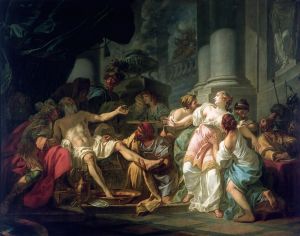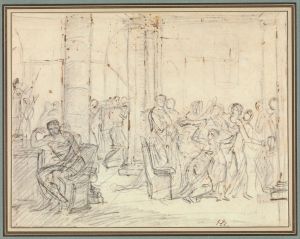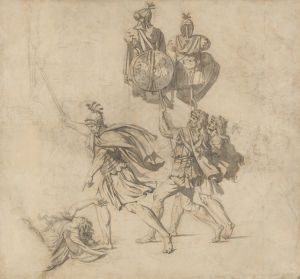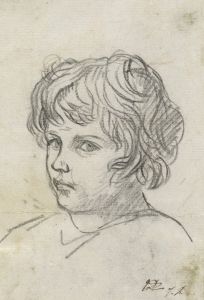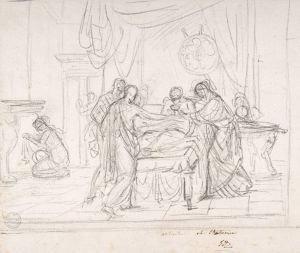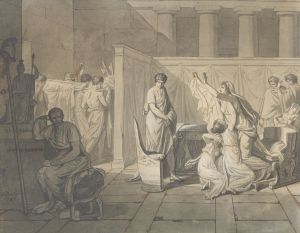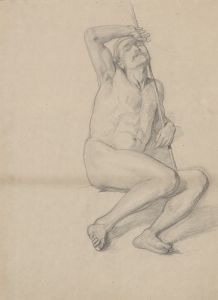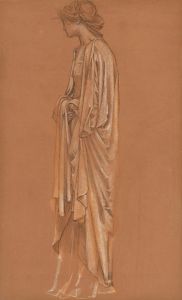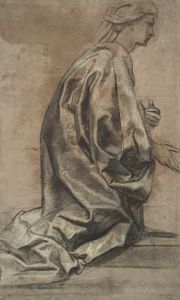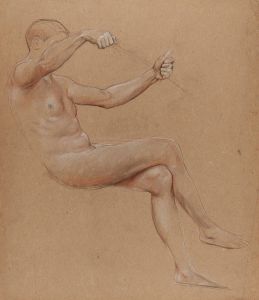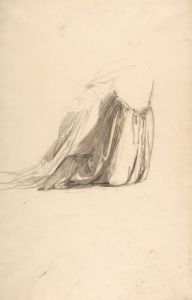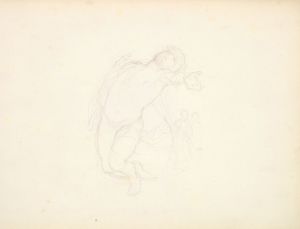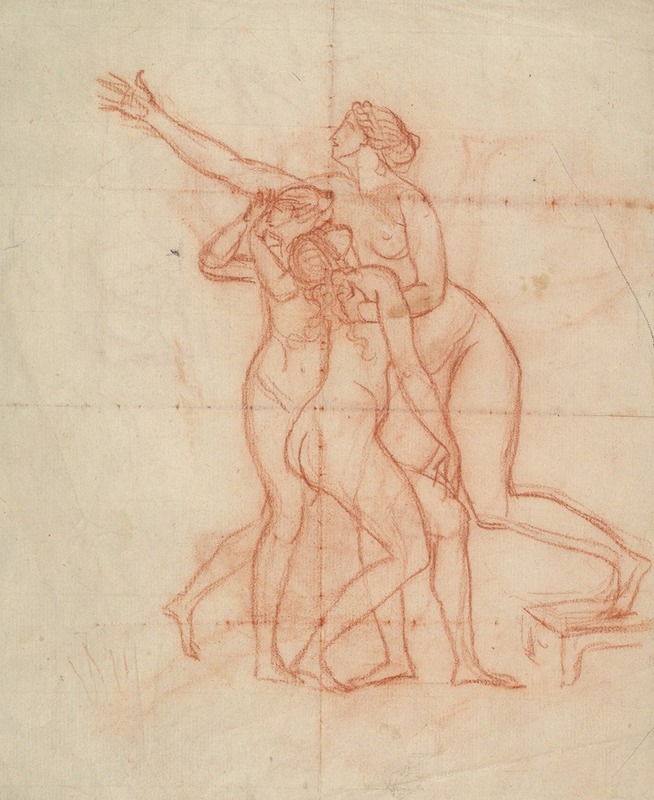
Study for the Wife and Daughters of Brutus
A hand-painted replica of Jacques Louis David’s masterpiece Study for the Wife and Daughters of Brutus, meticulously crafted by professional artists to capture the true essence of the original. Each piece is created with museum-quality canvas and rare mineral pigments, carefully painted by experienced artists with delicate brushstrokes and rich, layered colors to perfectly recreate the texture of the original artwork. Unlike machine-printed reproductions, this hand-painted version brings the painting to life, infused with the artist’s emotions and skill in every stroke. Whether for personal collection or home decoration, it instantly elevates the artistic atmosphere of any space.
"Study for the Wife and Daughters of Brutus" is a preparatory work by the renowned French painter Jacques-Louis David. Created around 1787, this study was part of David's extensive preparatory process for his larger and more famous painting, "The Lictors Bring to Brutus the Bodies of His Sons." Jacques-Louis David was a leading figure in the Neoclassical movement, and his works often depicted themes of civic virtue and stoic heroism inspired by classical antiquity.
The study focuses on the emotional turmoil and the stoic resolve of the family of Lucius Junius Brutus, a legendary figure in Roman history who played a crucial role in the overthrow of the Roman monarchy and the establishment of the Roman Republic. In the larger completed painting, the scene captures the moment after Brutus has condemned his own sons to death for their involvement in a conspiracy to restore the monarchy. The study specifically highlights the reactions of Brutus's wife and daughters to this tragic event.
In "Study for the Wife and Daughters of Brutus," David meticulously explores the expressions and body language of the female figures, aiming to convey the deep emotional conflict between familial love and republican duty. The figures are rendered with a high degree of detail and realism, characteristic of David's commitment to the principles of Neoclassicism, which emphasized clarity, order, and the emulation of classical art.
The study is executed in a combination of pencil and ink, showcasing David's skill in draftsmanship and his ability to capture complex emotional states with minimal means. The composition is carefully arranged to draw the viewer's attention to the faces and gestures of the women, each of whom reacts differently to the news of the execution. The wife of Brutus is often depicted in a state of sorrowful resignation, while the daughters may display a range of emotions from grief to shock.
David's preparatory studies, including this one, were crucial in the development of his final compositions. They allowed him to experiment with different poses, expressions, and arrangements before committing to the final version. These studies also provide valuable insight into David's artistic process and his dedication to achieving both emotional depth and historical accuracy in his works.
"Study for the Wife and Daughters of Brutus" is an important piece within David's oeuvre, as it reflects his interest in the moral and ethical dilemmas faced by individuals in times of political upheaval. The study not only serves as a testament to David's technical prowess but also underscores his role as a painter deeply engaged with the political and philosophical currents of his time.
Today, Jacques-Louis David is celebrated as one of the most influential artists of the 18th century, and his works continue to be studied for their artistic and historical significance. "Study for the Wife and Daughters of Brutus" remains an exemplary piece that highlights his ability to blend rigorous classical technique with profound emotional and narrative content.





